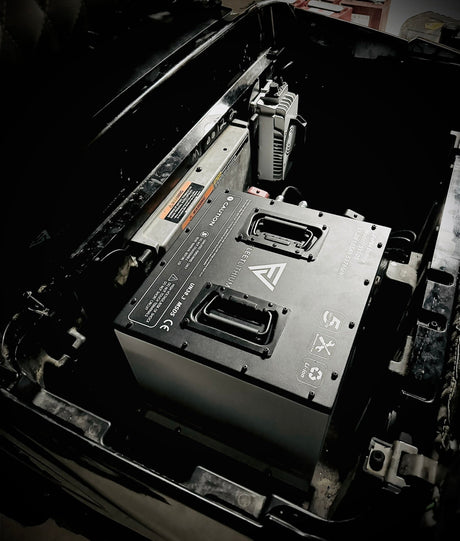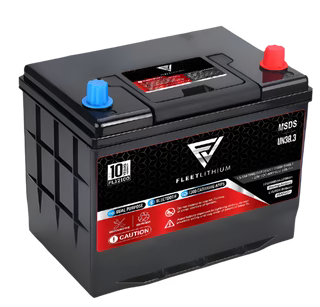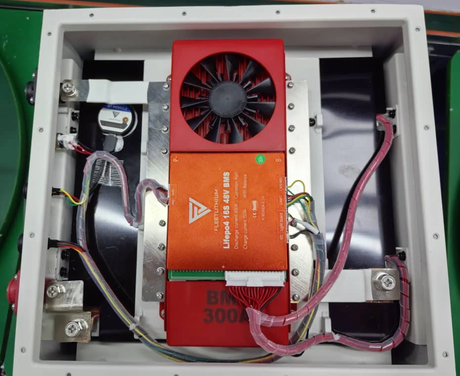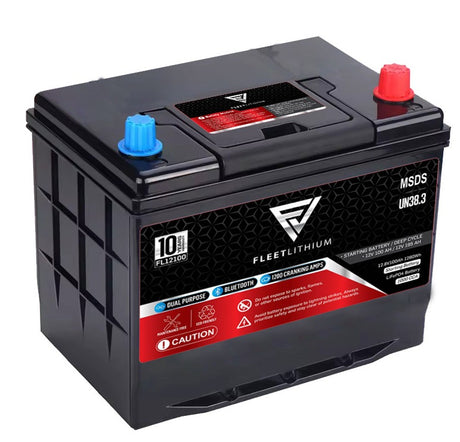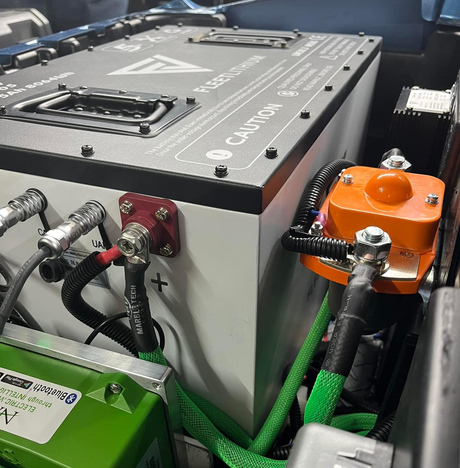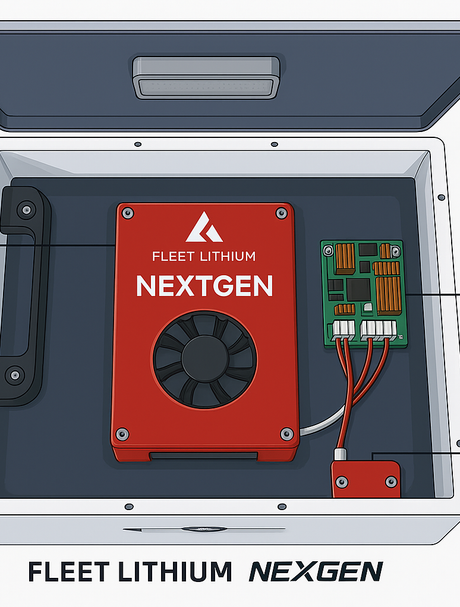Lithium-ion (Li-ion) batteries have become the cornerstone of modern energy storage, powering everything from smartphones and laptops to electric vehicles (EVs) and solar energy systems. Their efficiency, high energy density, and long lifespan have made them the preferred choice for a wide variety of applications. But what makes lithium batteries so special? How do they store and release energy? In this post, we will break down the working principles of lithium-ion batteries, explaining the science behind their operation in simple terms.
1. The Basic Structure of a Lithium-Ion Battery
To understand how lithium-ion batteries work, we first need to look at their basic components:
Anode
The anode is the negative electrode of the battery and is typically made from graphite. During discharge (when the battery is supplying power), lithium ions move from the anode to the cathode, releasing energy in the process.
Cathode
The cathode is the positive electrode and is made of a compound containing lithium, such as lithium cobalt oxide (LiCoO₂) or lithium iron phosphate (LiFePO₄). The cathode stores lithium ions during the charging process and releases them during discharge.
Electrolyte
The electrolyte is a lithium salt (such as LiPF₆) dissolved in a solvent. It serves as a medium for the lithium ions to travel between the anode and cathode. The electrolyte is essential for maintaining the flow of ions during both the charging and discharging processes.
Separator
The separator is a thin, porous membrane that prevents direct contact between the anode and cathode while allowing the flow of ions. It ensures the safe operation of the battery by preventing short circuits.
Current Collectors
The current collectors are conductive materials (typically made of copper for the anode and aluminum for the cathode) that allow electrons to flow from the battery to the external circuit, supplying power to the device.
2. How Lithium-Ion Batteries Charge and Discharge
Now that we’ve covered the basic components of a lithium-ion battery, let’s dive into how it actually works during the charging and discharging processes.
Discharge Cycle (When the Battery Powers a Device)
When you use a device that’s powered by a lithium-ion battery, it’s in the discharge cycle:
- Lithium ions in the anode move through the electrolyte to the cathode. As the ions travel, they release stored energy.
- This movement of ions generates electrons, which flow through the external circuit to power the device (like your smartphone, laptop, or electric vehicle).
- As the ions move toward the cathode, the anode loses lithium, and the battery discharges, providing power to your device.
Charging Cycle (When the Battery Gets Powered Up)
When you plug your device into a charger, the battery enters the charging cycle:
- The charger applies an external voltage that drives the lithium ions back from the cathode to the anode through the electrolyte.
- As lithium ions are stored in the anode, the cathode gives up its lithium and the battery recharges.
- The charging voltage is carefully controlled to ensure the ions are safely moved back into the anode without overcharging, which could lead to overheating or damage.
The process of charging and discharging can continue for thousands of cycles (depending on the type of battery), which is why lithium-ion batteries are known for their long cycle life and high energy efficiency.
3. Why Lithium-Ion Batteries Are So Efficient
Lithium-ion batteries are more efficient than other types of rechargeable batteries like lead-acid or nickel-cadmium (NiCd) batteries for several key reasons:
Higher Energy Density
Lithium ions are the lightest metal ions available, meaning they can store more energy in a smaller and lighter space. This high energy density is why lithium-ion batteries are used in electric vehicles, mobile devices, and solar energy storage systems—where both performance and size matter.
Longer Lifespan
Lithium-ion batteries last significantly longer than other rechargeable battery types. While lead-acid batteries may last around 500 charge cycles, lithium-ion batteries can last anywhere from 2,000 to 5,000 cycles or more. This is why they are preferred in high-demand applications like electric vehicles and solar power storage systems.
Faster Charging
Lithium-ion batteries charge much faster than traditional lead-acid batteries. This is because of their high charge efficiency and the ability to handle higher charging rates without significant loss of capacity. This makes them ideal for applications like electric vehicles, where quick recharging is crucial.
Better Depth of Discharge
Lithium-ion batteries can be discharged more deeply without damaging the battery. In fact, they can be safely discharged up to about 80-90% of their total capacity, while lead-acid batteries should never be discharged below 50%. This means you get more usable power from a lithium-ion battery before needing to recharge it.
4. Safety Mechanisms in Lithium-Ion Batteries
While lithium-ion batteries are known for their high performance, they also come with safety considerations. To mitigate risks such as overcharging, overheating, or short circuits, modern lithium-ion batteries are equipped with several safety features:
Battery Management System (BMS)
The Battery Management System (BMS) is a critical component in lithium-ion batteries. It is an integrated circuit that monitors key factors such as voltage, current, temperature, and state of charge. The BMS helps prevent overcharging, overdischarging, overheating, and short circuits—all of which could lead to potential damage or safety hazards.
Thermal Protection
Lithium-ion batteries include built-in thermal protection mechanisms to ensure they don’t overheat during use. This is especially important in high-energy applications like electric vehicles and solar power systems, where heat management is crucial for maintaining performance and safety.
Internal Fuse and Safety Vent
Many lithium-ion batteries also have internal fuses or safety vents to protect against catastrophic failures, such as a thermal runaway. If the battery becomes too hot, the fuse may blow, or the vent may release pressure, preventing an explosion or fire.
5. The Future of Lithium-Ion Batteries
As the demand for clean energy grows, so does the need for efficient, reliable energy storage. Lithium-ion batteries will play an essential role in powering the next generation of electric vehicles, renewable energy storage, and consumer electronics.
Some exciting advancements in lithium-ion technology include:
- Solid-State Batteries: These batteries replace the liquid electrolyte with a solid electrolyte, which could make lithium-ion batteries even safer and more energy-dense.
- Recycling Improvements: With a growing focus on sustainability, better battery recycling technologies are emerging to recover valuable materials from used lithium-ion batteries and reduce environmental impact.
- Longer Life and Faster Charging: Ongoing research aims to improve the cycle life and charging speed of lithium-ion batteries, making them even more efficient and convenient for everyday use.
Conclusion
Lithium-ion batteries are at the heart of the modern energy revolution. By using lithium ions to transfer energy between the anode and cathode, these batteries provide high energy density, long lifespan, fast charging times, and a better overall user experience than older technologies. With their widespread use in everything from electric vehicles to solar storage systems, lithium-ion batteries are paving the way for a cleaner, more efficient future.
At Fleet Lithium, we are proud to offer LiFePO4 batteries, a safe and sustainable form of lithium-ion technology that delivers reliable power for a wide range of applications. Our Battery Management Systems (BMS) and thermal protection ensure that our batteries perform safely and efficiently, keeping your systems running smoothly for years to come.


